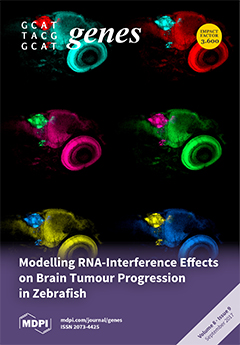Keratin-associated proteins (KAPs) are structural components of wool and hair fibres, and are believed to play a role in defining the physico-mechanical properties of the wool fibre. In this study, the putative ovine homologue of the human KAP26-1 gene (
KRTAP26-1) was
[...] Read more.
Keratin-associated proteins (KAPs) are structural components of wool and hair fibres, and are believed to play a role in defining the physico-mechanical properties of the wool fibre. In this study, the putative ovine homologue of the human KAP26-1 gene (
KRTAP26-1) was sequenced and four variants (named
A–D) were identified. The sequences shared some identity with each other and with other
KRTAPs, but they had the greatest similarity with the human
KRTAP26-1 sequence. This suggests they represent different variants of ovine
KRTAP26-1. The association of these
KRTAP26-1 variants with wool traits was investigated in the 383 Merino-Southdown cross sheep. The presence of
B was associated (
p < 0.05) with an increase in mean fibre diameter (MFD), mean fibre curvature, and prickle factor (PF). The presence of
C was found to be associated (
p < 0.05) with an increase in wool yield (Yield) and mean staple length (MSL), and a decrease in MFD, fibre diameter standard deviation (FDSD), and PF. The results suggest that sheep with
C have, on average, higher wool quality. These results may be useful in the future development of breeding programs based on decreasing wool MFD and FDSD, or on increasing wool MSL.
Full article






